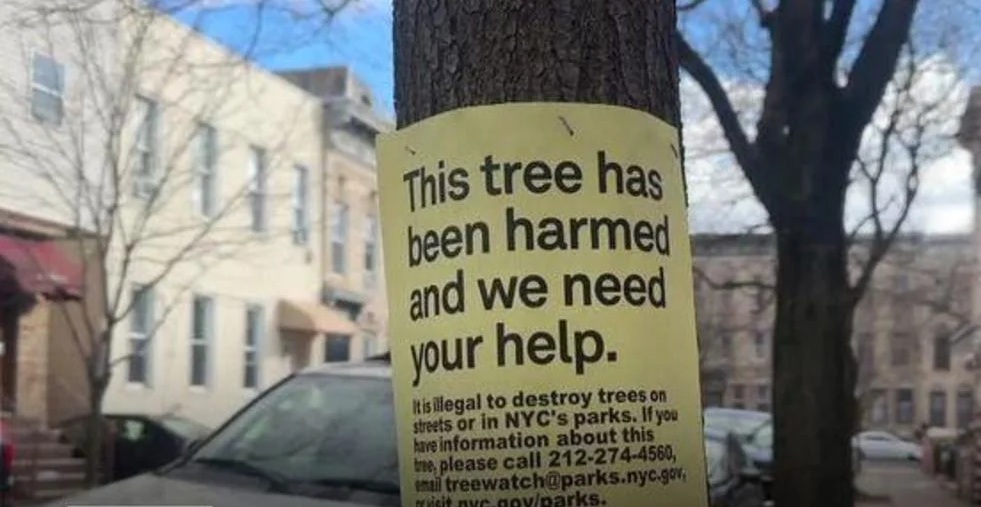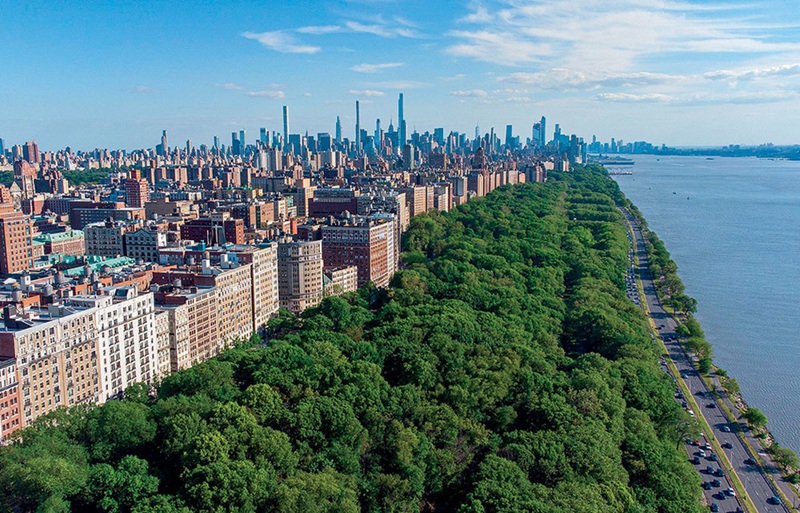
In recent weeks, a concerning wave of tree vandalism has been reported across various neighborhoods in Queens, New York. From parks to residential streets, a growing number of trees have been found severely damaged or destroyed, prompting local residents and environmental advocates to call for heightened awareness and action.
The Scope of the Vandalism
Reports of tree damage began to surface in early December 2024, with residents in neighborhoods such as Astoria, Forest Hills, and Jackson Heights noticing that trees had been marked with graffiti, intentionally uprooted, or had their trunks and branches broken. Some trees were even completely felled, their stumps and debris left behind on sidewalks and streets.
Queens has long prided itself on its abundance of green spaces, and trees play a critical role in maintaining the area’s environmental balance. They help improve air quality, reduce urban heat, provide shade, and offer habitats for wildlife. So the damage to these trees is not just an act of vandalism but a serious environmental concern.
Local organizations, like the Queens Tree Advocates and the New York City Parks Department, have stepped forward to address the growing issue. According to these groups, they have seen an increase in reports of damaged or destroyed trees since the fall of 2024.
Nature of the Vandalism
While the motivations behind the tree damage remain unclear, the methods used are disturbingly varied. In some cases, vandals have used tools to carve into the bark, spray-painting symbols or messages, which can potentially weaken the tree’s structure. In others, branches have been hacked off, or the roots have been disturbed to the point where the tree risks falling or dying.
Another worrying trend is the intentional uprooting of younger, smaller trees. These saplings, often planted in recent city greening initiatives, have been snapped at the base or dug out completely, leaving gaping holes in public spaces that are both unsightly and dangerous.
Impact on the Community and Environment
The implications of this vandalism go far beyond aesthetic damage. Trees provide critical ecosystem services in urban areas, such as:
- Improving Air Quality: Trees absorb carbon dioxide and other pollutants, playing a major role in reducing the urban heat island effect and improving air quality.
- Biodiversity: Trees offer habitats for a variety of wildlife, from birds to insects, and their destruction disrupts local ecosystems.
- Climate Resilience: In the face of climate change, trees help manage stormwater, reduce flooding, and provide cooling shade during the summer months.
In neighborhoods where trees have been vandalized, residents are left to contend with the loss of these benefits, often with little recourse. The destruction of green spaces can also have a psychological toll, as urban trees are a vital part of residents’ connection to nature and the outdoors.
Local Response and Actions
The community’s response to the tree vandalism has been swift, with local activists and environmental organizations calling for more proactive measures to protect urban trees. The Queens Tree Advocates, a grassroots group dedicated to tree preservation in the borough, has organized several clean-up events to restore vandalized tree areas. They have also partnered with the NYC Parks Department to raise awareness about the importance of trees in urban spaces.
In addition, the NYC Department of Environmental Protection (DEP) has begun increasing surveillance in affected areas, and some local parks are installing additional signage to educate the public on the value of trees and the penalties for damaging them.
“We take the protection of our city’s trees very seriously,” said Maria Lopez, a spokesperson for the NYC Parks Department. “Not only are they essential to the environment, but they are also a part of what makes our neighborhoods vibrant and livable. We are working closely with local authorities and community groups to ensure that this senseless vandalism stops.”
The Role of Community and Education
For many residents, the issue of tree vandalism highlights the need for increased environmental education and a deeper sense of community responsibility. Several local schools have already started integrating tree care and urban ecology into their curriculum, with the hope of instilling respect for nature in young people.
One such initiative, called “Adopt a Tree,” encourages families and individuals to take ownership of local trees by pledging to care for them, monitor their health, and report any signs of damage or neglect. By fostering a deeper connection to the urban trees around them, these programs aim to curb destructive behavior and promote a greater appreciation for the natural world.
Legal Consequences for Tree Vandalism
Under New York City law, damaging a tree on public property is considered a criminal offense. Offenders can face hefty fines and, in some cases, even jail time. The New York City Department of Environmental Protection has encouraged residents to report any incidents of tree vandalism to local authorities.
Additionally, there are growing calls for stricter penalties for those caught damaging trees, as well as for the installation of more public-facing cameras in high-risk areas to deter future incidents.
Looking Forward: Protecting Queens’ Green Spaces
As Queens’ tree vandalism continues to be a troubling issue, residents and environmental groups are determined to combat the damage and restore the borough’s natural beauty. The collaboration between local organizations, the NYC Parks Department, and concerned residents is key to ensuring the future protection and preservation of these valuable urban assets.
For now, the hope is that by educating the public on the importance of trees and providing the necessary resources for preservation, Queens can continue to flourish as a greener, more sustainable city. The ultimate goal is for all residents to understand that a tree is not just a piece of landscaping—it’s a vital part of the urban ecosystem and a shared responsibility.
